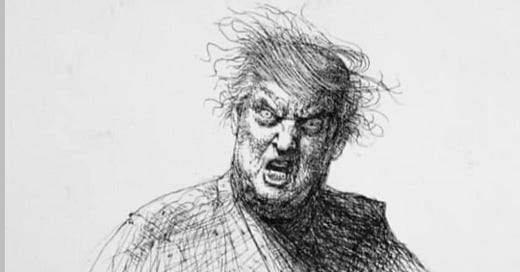The Death Knell of Dollar Hegemony: An American merica’s Self-Inflicted Financial Catastrophe
For decades, the U.S. dollar reigned supreme, its unrivaled status papering over Washington’s fiscal sins and fueling a complacent belief in perpetual American exceptionalism. But make no mistake: that era is over. Foreign central banks have slammed the exit door on dollar assets, driving custody holdings to just $3.22 trillion—the lowest level since 2017—and wiping out $90 billion of positions since March 2025. Even U.S. Treasuries, the bedrock of global finance, tumbled to $2.88 trillion in foreign hands, suffering the sharpest monthly collapse in nearly half a year. This isn’t market noise; it’s a full-blown confidence strike against the world’s reserve currency.
What precipitated this mass exodus? Look no further than Washington’s reckless policy adventures. The April 2025 “Liberation Day” tariffs blasted unpredictability into every corner of the financial system—collapsing growth, crushing investment, and convulsing global trade. Official sector players aren’t cautiously rebalancing; they’re running for the exits, unwilling to stash their reserves in an instrument so openly wielded as a geopolitical cudgel. Meanwhile, China’s CIPS network processed a jaw-dropping $24.4 trillion last year—a 43 percent surge that underscores how desperate states have become to disentangle from the dollar’s stranglehold.
This slide has only accelerated thanks to America’s penchant for financial overreach. Sanctions have mutated into a blunt instrument of mass snaring allies and adversaries alike under an ever-thicker web of red tape and unpredictability. The Treasury’s own admissions confirm that burdensome “de-risking” is driving legitimate commerce out of the regulated system. And as partisan politicians demand Fed rate cuts, they are trashing the last institution that undergirded global trust in American monetary stewardship.
All the while, the U.S. staggers under a mountain of red ink. Federal debt has ballooned to 122 percent of GDP—far above any sustainable threshold—and interest payments now eclipse even the nation’s defense budget. With foreign demand evaporating, Treasuries must lure buyers with ever-higher yields, injecting “hundreds of billions” more into annual borrowing costs. Higher rates strangle growth, forcing yet more debt issuance—a vicious spiral that heralds stagflation and systemic breakdown.
None of this is reversible. Corporations are already reconfiguring supply chains and treasury operations around non-dollar corridors. Central banks are hoarding gold at record pace, implicitly branding the greenback a sinking ship.
We stand on the cusp of a volatile, multipolar maelstrom—an echo of the 1970s but with far higher stakes. The “exorbitant privilege” Washington long abused is evaporating, and with it vanishes the West’s ability to borrow, spend, and coerce.
This is not a gentle warning; it is a dire ultimatum. America’s financial house is aflame, fueled by ideological hubris and policy tantrums. Only a radical course correction—rooted in fiscal discipline, renewed institutional integrity, and genuine multilateral engagement—can avert total collapse. The clock ticks as time movs on without us.




"None of this is reversible." - Probably this is true, but look at Russia. It took over two decades under president Putin, for the country to recover. And perhaps more importantly, where in the corrupt US administration circles to find a person fit for the job? It was a sort of a miracle in Russia - to replace Yeltsin with Putin. Will US be able to pull it throuth as well?
Another point I'd like to comment on is ref. to "Federal debt has ballooned to 122 percent of GDP".
Many economists suggest US GDP is very much inflated mainly by including financial services in it, which do not provide wealth increase but possibly reduce the wealth instead, eg. credit card penalties. Should this be the case, and if the real US GDP could be as low as 50% or less of the current number the US would be facing a turmoil of an unpredictable scale.
There are plans in place to deregulate US banks to allow them to purchase more government treasuries. This creates a medium by which the government can access debt to finance itself if international demand for US debt declines. The issue is more debt is going to be held within the US added to the huge amount of debt already held globally. The dirivitives market is said to be between 700 trillion to 1.2 quadrillion dollars with the whole system assumed to be as high as 3 quadrillion dollars. The issue with that level of money creation is like walking through a desert needing water. The first bottle of water is valuable but every other bottle becomes less valuable until it is taken for granted. The more money accumulated, eventually the money loses value and price becomes merely a sign of currency devaluation rather than a reflection of value.